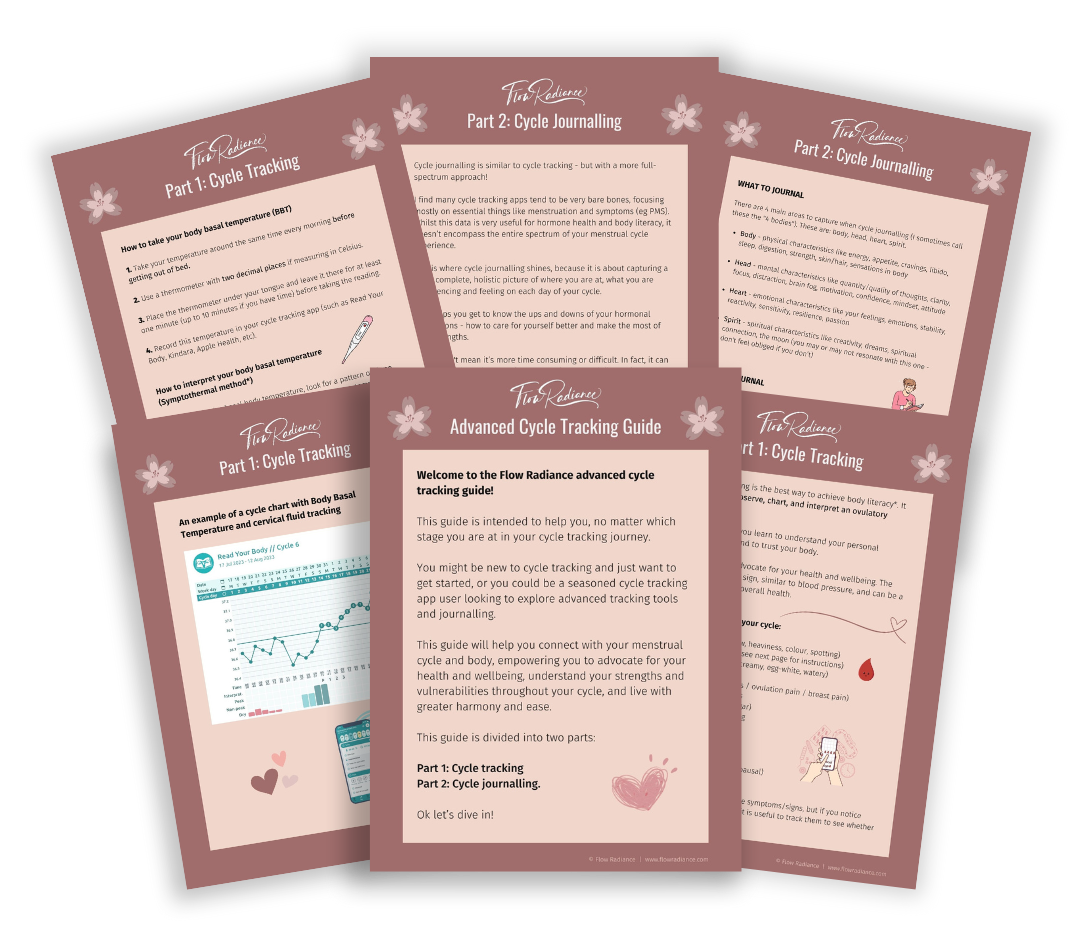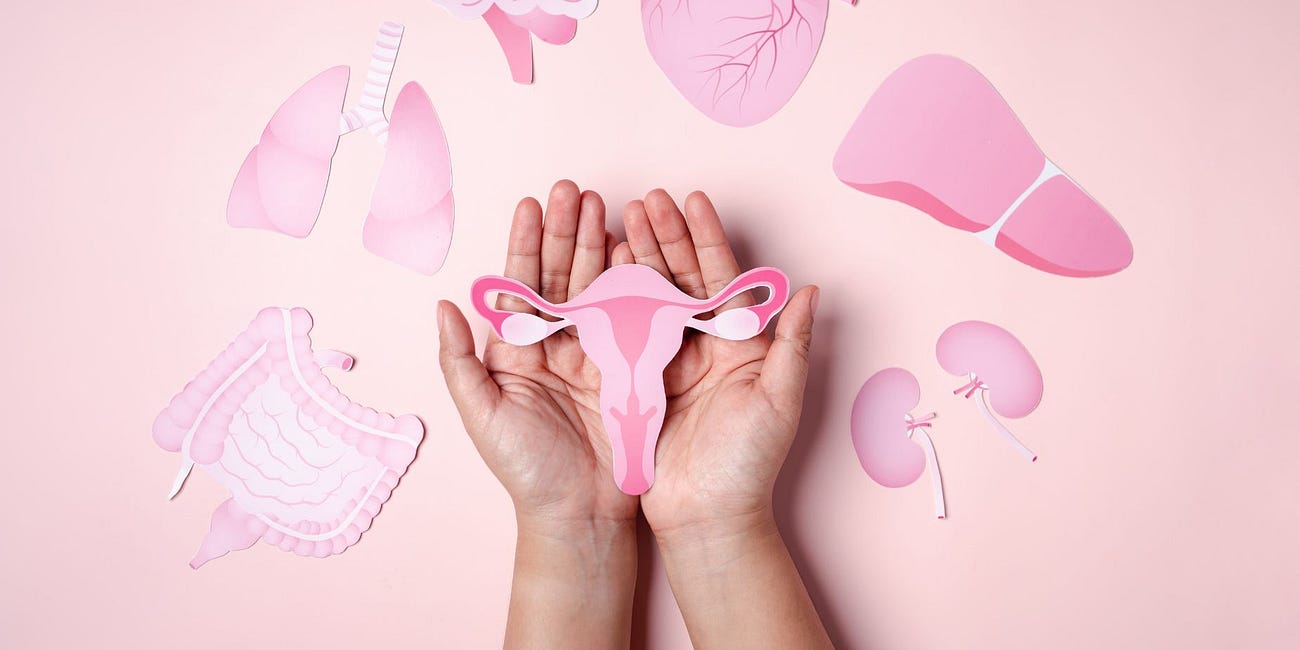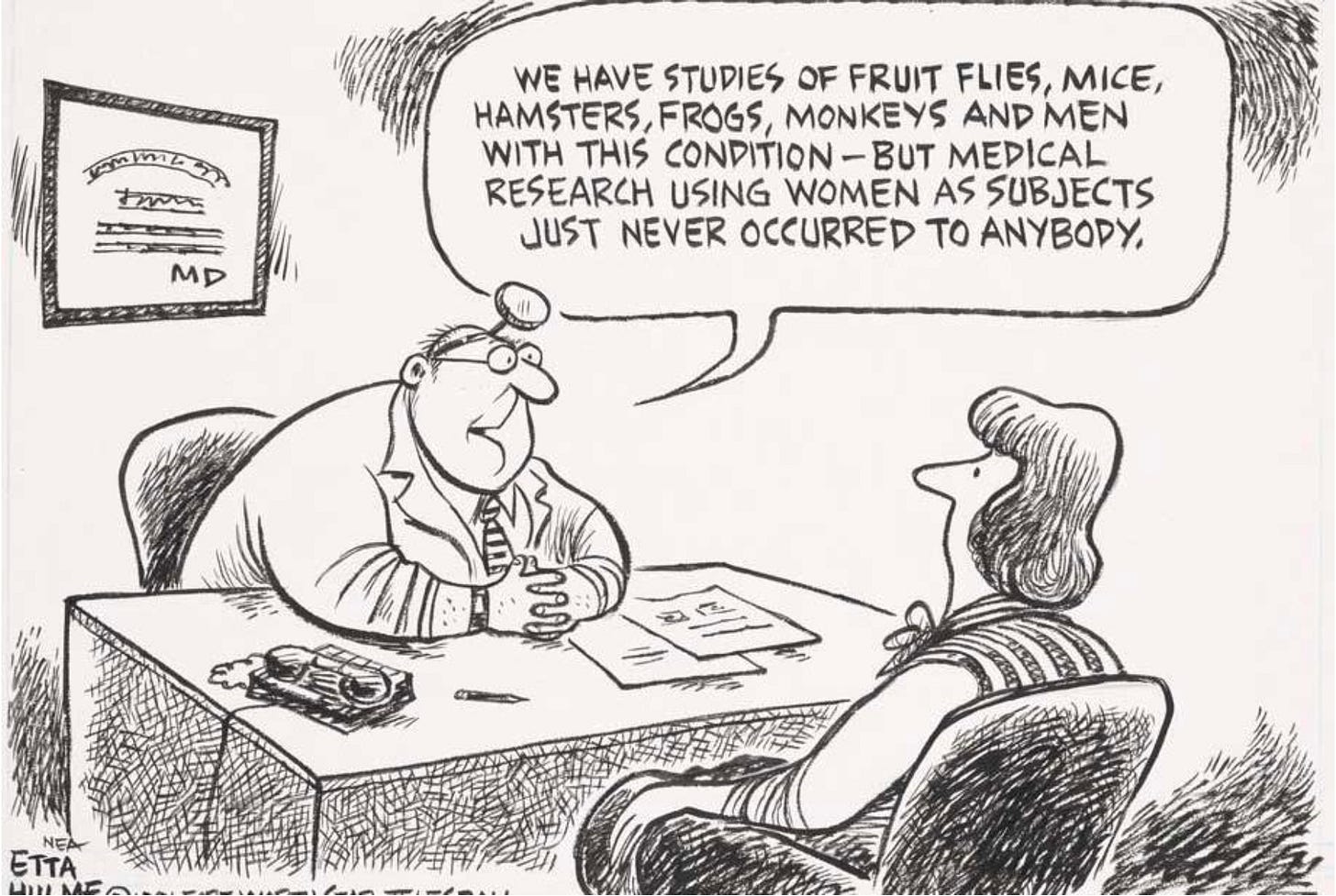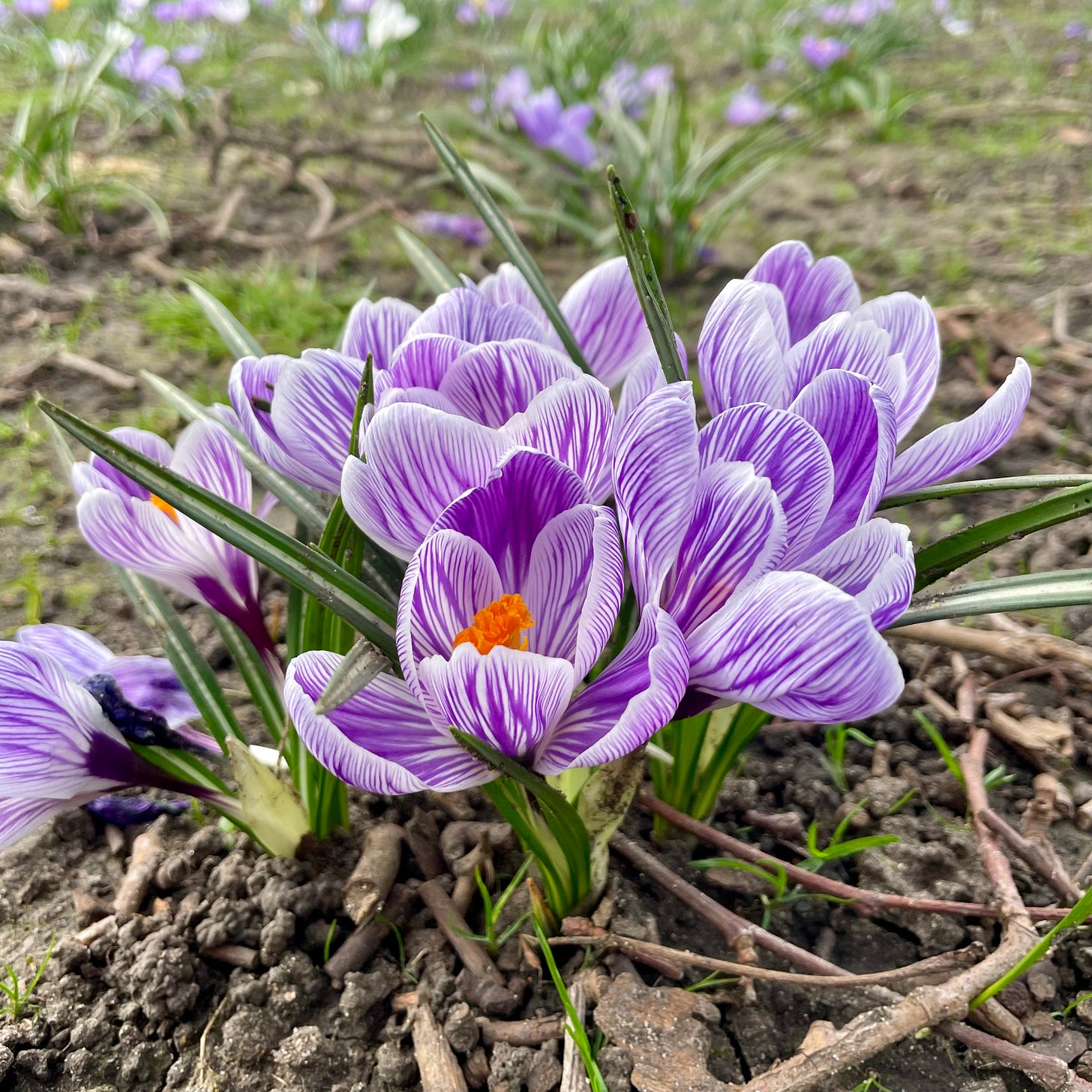Menstrual cycle myths that need to die
Honouring women's history month and embracing the energy of inner and outer spring
Happy recent spring equinox! 🌸 London has been blessed with some gorgeous sunshine this past week — spring is definitely in the air. And in perfect synchronicity, I’m also in my inner spring*, currently on cycle day 10.
Before I get into the rest of this post, I want to highlight that I’m opening up an AMA (ask me anything) over the next few weeks. You can comment, reply, email, dm me ANY question you have, and I’ll answer them all in a future post!
Anyway, so I invite you to ponder, how are you experiencing this seasonal transition — from winter’s rest to spring’s renewal — in your own life?
For me, I’ve felt a stirring of creative energy, especially in music making. I’ve finally returned to my music production works-in-progress and fingers crossed 🤞🏼 — I’ll be finishing and releasing some new tracks this summer! 🎶
Speaking of creativity, I’m thrilled to share that my first commissioned editorial — “Creativity: Flow With Your Menstrual Rhythm” — was just published by Create Define Release, a community-first music organisation championing equity for producers and artists.
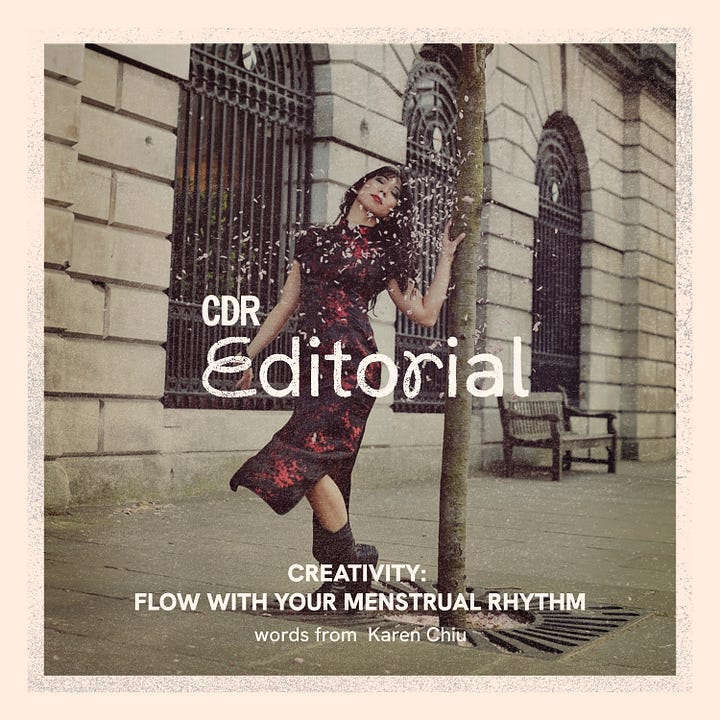
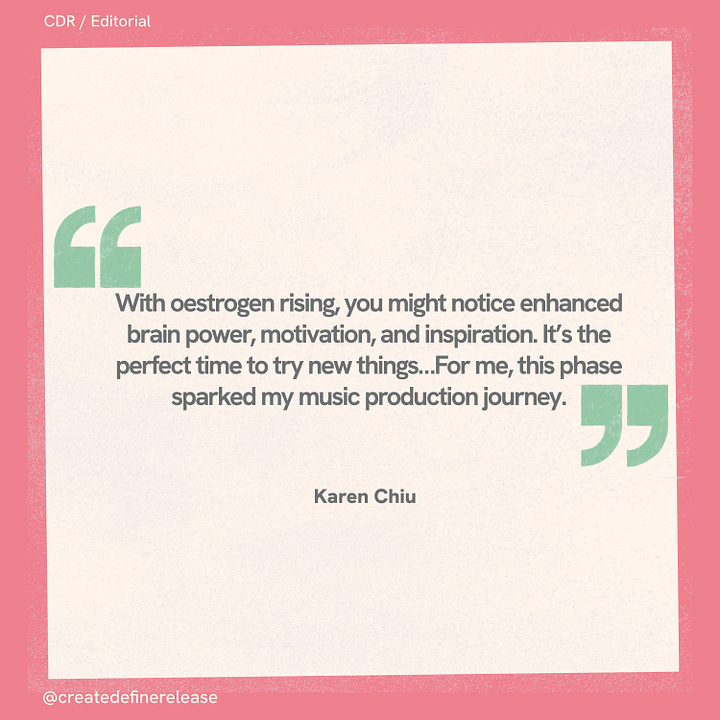
The response to my article has been great, and it’s reminded me why this work matters. The lack of education around the menstrual cycle is staggering, and it’s clear just how needed this knowledge is. It’s why I do what I do — and why I’ll keep sharing.
So, as we approach the final week of Women’s History Month, I thought it was the perfect time to debunk some menstrual cycle myths I hear far too often. Because hey, who doesn’t love a good debunking eh? 😉
Myth 1: The contraceptive pill regulates your menstrual cycle
Nope. The pill does not “regulate” your cycle or your hormones — despite what you may have been told. What it actually does is shut down your natural hormone production and replace it with synthetic oestrogen and progestin (which is not the same as progesterone). In fact, hormonally speaking, someone on the pill most closely resembles someone in menopause.
When the first oral contraceptive pill (Enovid) was introduced in 1960, women in the initial test group were convinced they were pregnant — because their periods disappeared. This caused a major problem with uptake. Women didn’t want to take something that completely shut down their cycles. The response? The pill was redesigned to induce a fake bleed every 28 days — solely to make women feel like they were still having a period. This is called a withdrawal bleed, and it’s not a real period because ovulation doesn’t happen.
The pill essentially shuts down your ovaries and stops ovulation (except in the case of a small percentage those who use progestin-only IUDs or pills). It does this by disrupting the HPO axis (Hypothalamic-Pituitary-Ovarian axis) — the communication system between your brain and your ovaries.
So why is it handed out like candy for acne, period pain, heavy bleeding, PMS, irregular cycles, missing periods, PCOS, endometriosis, fibroids — basically every hormone-related issue under the sun?
It’s the equivalent of taking the batteries out of a fire alarm when your house is on fire. Wild, right?
You’d think doctors would try to put out the fire instead of just silencing the alarm, but… it’s not entirely their fault. This approach comes straight from their medical training. Most GPs receive very little education on hormone health or root cause medicine — which is exactly why I’m here, writing about all of this.
Myth 2: You can get pregnant on any day of your cycle
This one stirred up some debate when I first posted about it on Instagram — partly due to incorrect information on an NHS page that claimed you could get pregnant on any day of your cycle (which seems to have been corrected now).
The fact is: you can only get pregnant on six days of your cycle (maybe seven in very rare cases, if your partner’s sperm is exceptionally healthy).
This fertile window includes:
The five days leading up to ovulation (because sperm can survive in cervical fluid up to 5-6 days)
The day of ovulation itself (since the egg only lives for 12–24 hours before disintegrating)
Given the global decline in male fertility (also dubbed spermageddon), those five days may even be a tad optimistic for some. But regardless of the exact window, the big unknown is when those six days actually happen in any given cycle.
So yes, it could be during your period — if you ovulate early on say, day 9. Then your fertile window could start from day 4.
Or yes, you could ovulate on day 30 — especially if you have PCOS or irregular cycles, making conception possible much later than expected.
This is why cycle tracking is so empowering — and why relying on tracking app algorithms or past cycle patterns can be a huge mistake. What I’m talking about here is the Fertility Awareness Method (FAM), which, when practiced correctly using at least two biomarkers (like the symptothermal method), can be 99.4% effective as contraception.
This is the method I’ve personally used successfully for the last 4–5 years and reference in my cycle tracking guide.
If you want to dive deeper, I highly recommend The Fifth Vital Sign by Lisa Hendrickson-Jack. And if you’re considering FAM for contraception, I’d strongly suggest working with a trained fertility awareness practitioner for a few cycles first.
Myth 3: Period pain and PMS are normal
These symptoms might be common, but that doesn’t make them normal! In fact, they’re a classic case of evolutionary mismatch:
“The symptoms and disease risks from living in an environment that differs substantially from that in which we evolved.”
In other words, period pain and PMS aren’t just part of being a woman — they’re a sign that our bodies are struggling to adapt to a modern world that wasn’t built to support our natural physiology.
Chronic stress, poor-quality nutrition, environmental toxins, endocrine disruptors, gut imbalances, lack of natural sunlight, too much artificial light, circadian rhythm dysregulation… the list goes on. Modern life is basically one big hormonal stress test, and our menstrual cycles are paying the price.
To learn more about this, check out my post below.
Decoding your menstrual cycle
Hello friends! I’ve just wrapped up a week (okay, maybe two weeks) of celebrating my 46th birthday. 🎉
Myth 4: Women are just smaller men
Ok no one says this outright, but when it comes to biomedical research, this has essentially been the assumption for over half a century.
Medications, health guidelines, nutrition advice — most of it has been based on research done exclusively on men.
It wasn’t until 1993 that US Congress finally passed a bill requiring women to be included in clinical trials. Before that, women were routinely excluded from drug studies for “safety” reasons.
By 2005, it became painfully clear why this was a problem: eight of the ten prescription drugs withdrawn from the U.S. market were because they caused greater health risks for women than men. And shockingly, it wasn’t until 2016 that researchers were even required to include both male and female animals in preclinical trials.
The reality is, sex matters. Around 30% of the human genome behaves differently between men and women, influencing everything from:
💩 The microbiome
🧠 The HPA axis (stress response)
💖 The cardiovascular system
😴 Sleep architecture
🍬 Insulin sensitivity
🧽 Cellular detoxification
⚡ Mitochondria function (energy production)
🛡️ Immune system response
⚖️ Body composition & metabolism
What this means in real life is that you need to be discerning when it comes to general health advice and wellness trends. Depending on your unique physiology and circumstances, things often marketed as healthy — like intermittent fasting, low-carb diets, veganism, cold plunges, or HIIT training — might actually be fueling your hormone imbalances rather than fixing them.
Women’s bodies are not just a scaled-down version of men’s. We are fundamentally different, down to a cellular level. It’s time the medical world and wellness industry caught up.
Well I hope this was insightful. I’d love to know if there was something new you learnt today, or if there are any menstrual cycle myths you would love to see gone.
Don’t forget if you have any questions at all from this post or any previous ones, I’m opening up an AMA (ask me anything) — you can comment, reply, email, DM me your question and I will collect and answer them all in a future post!
Sending you much love, joy and spring energy.
*Inner spring is a term coined by The Red School and used in the practice of menstrual cycle awareness referring to the follicular phase of the menstrual between your period and ovulation where rising oestrogen is the dominant hormone.




